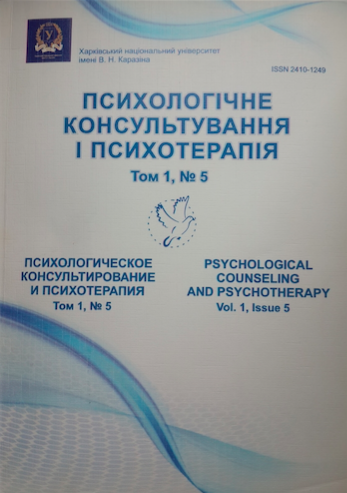Content-methodological client-centered therapy analysis: the problem
Abstract
This article deals with the problem of the philosophical understanding of the content and methodology of the Client-Centered Therapy (CCP). Author analyses three directions of the attempts to analyse the phenomenon of the psychotherapy in general. The aim of the article is to determine the problem zones and difficulties related to the analysis of the context and methodology of CCT as a psych technique and including it into the new map of psychotherapy. The model of psycho therapeutic theory by Vasyljuk F.I. was chosen to be the main instrument in the analysis of the context and methodology of CCT. Hence, author pays a very peculiar attention to four aspects, which combine the psycho therapeutic system, i.e. the highest aim and the priority, ontology and anthropology, main problematic condition of the client and the direction of the productive therapy in terms of CCP. Author concludes, that content and methodology analysis of CCP will help to determine the boundaries of application and the areas of demand for this type of psychological treatment of people. The author mentions also, that philosophic understanding of the therapy as a complex system will improve the practical results of the treatment.
Downloads
References
Василюк Ф.Е. Основы психологического консультирования, психокоррекции и психотерапии.-М., 2012.-125 с.
Цапкин В.Н. Единство и многообразие психотерапевтического опыта // Московский психотерапевтический журнал. 1992. № 2. С. 5—40.
Василюк Ф.Е. Понимающая психотерапия как психотехническая система. Дисс. ... докт. психол. наук. М., 2007. 430 с.
Колпачников В.В. Психотехническая система клиентцентрированной терапии// Консультативная психология и психотерапия, 2014, № 3. С. 80-92.
Архангельская В. В. Познание в психотерапии и классические идеалы научности // Консультативная психология и психотерапия, 2009, № 2. С. 157-171.
Бурлачук Л. Ф., Кочарян А. С., Жидко М. Е. Психотерапия: Учебник для вузов. 2-е изд., стереотип. — СПб.: Питер, 2007. — 480 с.








